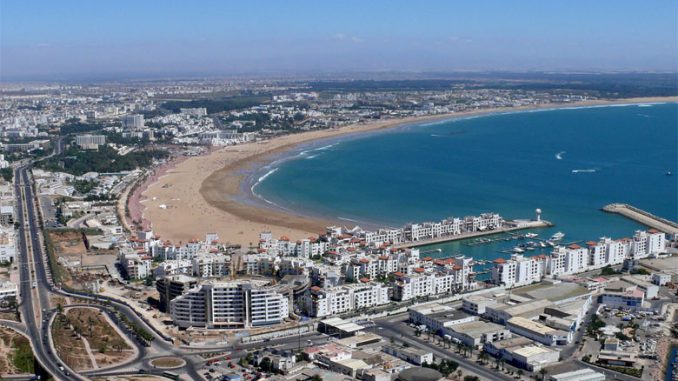
The ecological footprint in Morocco, which is the required surface area for the production of a good, increased from 1 to 1.47 hectares per inhabitant between 1990 and 2010. Bio-capacity, the productive area per person, has decreased by 25% since 1960. For Hynd Bouhia, a specialist in sustainable development, the only alternative available to the Kingdom is sustainable development.
It is obvious that the major infrastructure projects carried out by Morocco over the last two decades have an environmental cost caused by the consumption of natural resources, water and air pollution and by the quantity of waste generated. To evaluate this cost, Hynd Bouhia, a specialist in sustainable development strategies in the public and private sectors, has taken as a standard the ecological footprint, which measures the amount of bio-productive land surface area needed to produce goods and services and absorb the waste. In the latest issue of The Policy Center for the New South, a Moroccan think tank, the author, who has held several positions at the World Bank in Washington and the Prime Minister’s Office in Rabat, reports that this footprint has increased in Morocco. “It increased from 1 to 1.47 global hectares (hag) per person between 1990 and 2010, while bio-capacity, which represents the productive area per person, has decreased by 25% since 1960. These levels are below the world average of 2.84 hag per person for the ecological footprint and 1.68 hag per person for the average bio-capacity,” she writes. To arrive at this conclusion, Hynd Bouhia reviewed the damage caused to water resources, air, agricultural land, coastline and forests. She also looked at Morocco’s greenhouse gas emissions, which are estimated to cost 253 Dirhams per tonne of CO2 produced. Morocco annually produces 100.5 million tons of CO2 equivalent. Considering all these economic costs, the author of the article entitled “Are we afraid for our environment, our ecology and our biodiversity?”
does not hide her fears about the future of Morocco’s biodiversity, the second richest in the Mediterranean. According to her, salvation depends on sustainable development, to which Morocco has devoted a whole strategy up to 2030. “To face all these fears, any initiative and any development project will have to be carried out within a framework of sustainability and protection of our environment, our health, our ecosystem and our biodiversity,” Ms. Bouhia concluded.

Be the first to comment